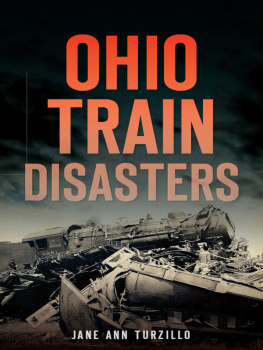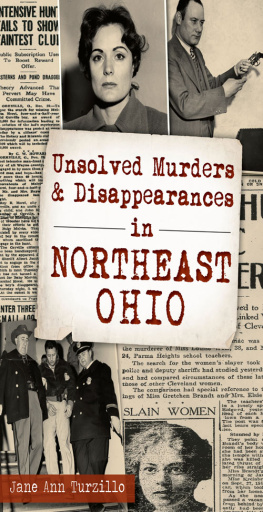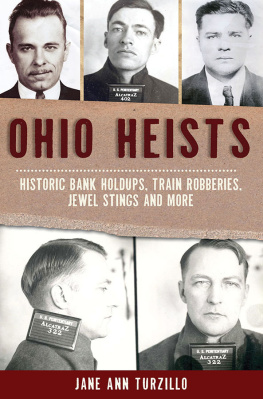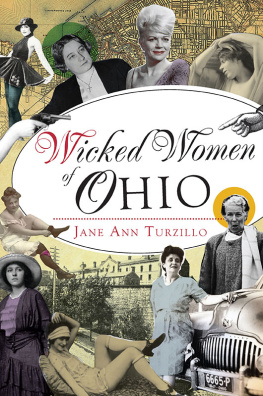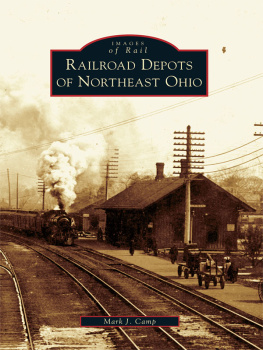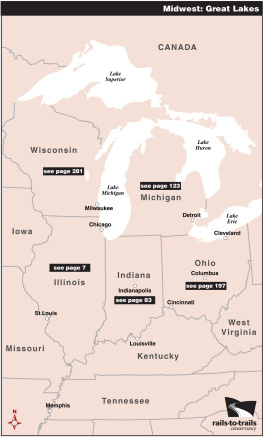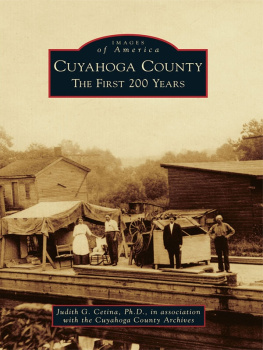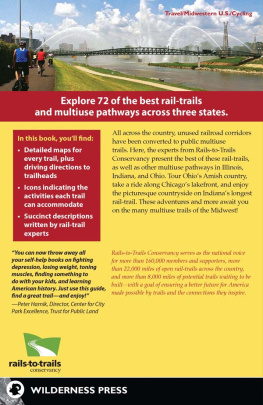

Published by The History Press
Charleston, SC 29403
www.historypress.net
Copyright 2014 by Jane Ann Turzillo
All rights reserved
First published 2014
e-book edition 2014
ISBN 978.1.62584.742.3
Library of Congress Control Number: 2014953169
print edition ISBN 978.1.62619.258.4
Notice: The information in this book is true and complete to the best of our knowledge. It is offered without guarantee on the part of the author or The History Press. The author and The History Press disclaim all liability in connection with the use of this book.
All rights reserved. No part of this book may be reproduced or transmitted in any form whatsoever without prior written permission from the publisher except in the case of brief quotations embodied in critical articles and reviews.
For Jack (19762010), because we miss you so much.
CONTENTS
ACKNOWLEDGEMENTS
I am delighted to have written Ohio Train Disasters, my third book, for The History Press. There would be no book without the help of my family, friends and many others. This page is where I get to acknowledge their assistance and to thank them.
First and foremost, I would like to thank my editor, Greg Dumais, for his foresight and patience. This book was his idea.
What is a train book without an engineer? I was lucky enough to have help from Rich Weller, retired engineer and mechanic for the Indiana & Ohio Railroad and current volunteer engineer and mechanic for the Whitewater Valley Railroad. His knowledge is boundless.
Family friend Deb Murphy and her Ashtabula friends gave me a heads-up on where to go in Ashtabula and what photos to take for the Ashtabula train wreck (No. 5 Is in the Creek!). Thank you, Cindy Wagner, descendant of Nellie Fay Daubenmire (The Middletown Tragedy), for giving me three photos for the book.
No book having to do with history could be written without the help of librarians, archivists and historical society curators and volunteers. They are the stars. All of the people listed here deserve a huge thanks. They provided me with research and photos. They are: George Adams, director of the G.W. Adams Educational Center, Prospect Place; Kimberly Barth, director of Photography & Graphics, Akron Beacon Journal; Nancy Arnold, curator, Jennie Munger Gregory Museum and Research Room; Cheryl Ashton, Amherst Library; Kristin Choiffi, reference specialist, Amherst Library; Laura Cramblet, library director, Bellaire Public Library; Liz Cross, Cuyahoga Falls Historical Society; Kori Fields, Conneaut Railroad Museum; Jennifer Fording, MA, MLIS, local history librarian, Harris-Elmore Public Library; Sandy Grigsby, reference clerk, Chillicothe and Ross County Library; Phil Haas, director of archives, Diocese of Cleveland; Donna Hudacek, Scipio Republic Area Historical Society; Judy James, Special Collections, Akron-Summit County Public Library; Pat Kelly, photo archivist, National Baseball Hall of Fame Library, Cooperstown, New York; Kristina Lininger, assistant librarian, Upper Sandusky Community Library; Ronald I. Marvin Jr., director, Wyandot County Historical Society and Museum; Rachel Mathie, Local History/Genealogy, Loudonville Public Library; Gwen Mayer, archivist, Hudson Library & Historical Society; Pat Medert, Ross County Historical Society; Ann McRoden Mensch, professional genealogist; Irene Metz, Cuyahoga Falls Historical Society; Donna Rumpler, administrative assistant, Amherst Historical Society; Cathy Reid, Clark County Public Library; Dierdre Root, Middletown Library; Mark Steinmetz, Seneca County Museum; Mitch Taylor, Pioneer & Historical Society of Muskingum County; Lisa Uhrig, Ross County Historical Society; James A. Willis, author and founder-director of the Ghosts of Ohio.
This book would not have been possible without those period journalists whose bylines never appeared at the tops of the newspaper stories they wrote.
I owe a huge thanks to my author friend Wendy Koile, who helped with the research and scanned some of the hard-to-find photos. She is a great sounding board, as well as having a wonderful sense of humor.
Two of the most important people to my writing career are my beta readers. In addition to checking my spelling and punctuation, they give me confidence and are great mentors. Both former professors of English at Kent State University and fine authors themselves, they are my sister, Mary Turzillo, PhD, and my friend and neighbor Marilyn Seguin.
I also want to thank my Northeast Ohio Sisters in Crime for their motivation.
And of course, thank you to John-Paul, Nicholas and Nathan just for being who you are. Love you.
I hope I have not forgotten anyone. If I did, it was not intentional.
INTRODUCTION
My paternal grandmother, Ugenia Monaco Turzillo, lived on Depot Street across from the railroad tracks and the little old Cherry Creek, New York station. When the big black goliaths rumbled down the track and passed her house, the dishes and glasses in the cupboards shook until I was sure some of them would jitterbug off the shelves and smash on the floor. Still, I loved sitting on the porch of her tiny shotgun-style house and watching the trains roll by. Even now, the wail of a locomotives whistle is a pleasant, if not melancholy, sound.
It was in this little town that my dad, Lee Turzillo, as a very young man, hopped on the back of a slow-moving freight train for a bigger city and the dream of a new and more prosperous life. He told my sister and me this story many times. I often thought that if it had not been for trains, he might not have realized his potential at becoming one of the foremost authorities on concrete in the world during the 1950s, 60s and 70s. Ironically, part of his career was devoted to building, restoring and repairing railroad bridges.
Just as the railroads played a role in my familys history, they were central in developing the Buckeye State. By the mid-1800s, Ohio was home to a network of railroad systems that transported wares and goods throughout the country. Passenger trains carried travelers from one station to the next or took them great distances. Cities and towns sprang up all along the iron rails. The railroad connected our state to the rest of the nation.
While Ohioans and their merchandise rode the rails, so did death and destruction. Train travel was not always as safe as it is today, as evidenced in the twelve chapters offered in this book. Accidents happened because of human error or negligence. Sometimes bridges were not up to the weight of the huge iron beasts. Still other disasters were caused by derailment.
Fire was the number one killer during an accident. Coaches were heated in the winter by stoves and lit after dark by oil lanterns. When a train wrecked, the stoves and lanterns tipped over. Flames fueled by oil from the lamps and dry wood from the cars construction would immediately engulf everything, leaving most passengers to perish. The wrecks in Ashtabula, Cuyahoga Falls and Republic are just a few examples.
Steam pouring out of a wrecked engine was maybe even a more horrific killer, as it scalded people to death. The disaster in Dresden is a heartbreaking example.
Other accidents produced mangled bodiessome unidentified to this dayfrom twisted metal, sharp glass and splintered wood. They left widows and orphans behind and made some men and women heroes.
Here are twelve stories of trainmen, victims and the behemoth locomotives that helped to build the Buckeye State and our lives.
Next page
